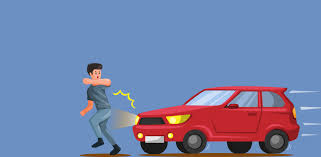Motor vehicle Laws Vatican City
Motor vehicle laws in Vatican City are quite straightforward, as the city-state is very small (only about 44 hectares) and lacks a large number of vehicles. However, Vatican City does maintain regulations regarding driving, traffic, and road safety. These laws are primarily modeled after Italian laws, as Vatican City is an enclave within Rome, Italy.
Key Motor Vehicle Laws in Vatican City:
1. Driver's License and Vehicle Registration
Driver’s License:
- Individuals wishing to drive in Vatican City must hold a valid Italian driver’s license, as Vatican City does not issue its own driving licenses. However, residents or individuals living within the Vatican may be required to hold specific Vatican documentation.
- International drivers with valid international driving permits can drive in Vatican City, given that the rules are closely aligned with those of Italy.
Vehicle Registration:
- Vehicles in Vatican City are registered under Italian plates. While Vatican City has a small number of official vehicles, many vehicles used in Vatican City (especially those used for official or diplomatic purposes) are registered with Italian authorities.
- The license plates used are specific to Vatican City, with a Vatican-issued code for identification.
2. Traffic Rules and Regulations
Speed Limits:
- Due to the small size of Vatican City, the speed limits are low:
- The speed limit within Vatican City is generally 50 km/h (31 mph).
- In more densely populated areas, near St. Peter's Square or other key locations, the speed limit may be reduced for safety reasons or due to heavy pedestrian traffic.
Seat Belts:
- Seat belt use is mandatory for the driver and all passengers in the vehicle, as per Italian law, which also applies within Vatican City.
Drink Driving:
- The legal blood alcohol concentration (BAC) limit in Vatican City follows that of Italy, which is 0.05%.
- Drunk driving is illegal and heavily enforced, with penalties including fines, license suspension, or even imprisonment in severe cases.
Mobile Phones and Distractions:
- The use of a mobile phone while driving is prohibited unless using a hands-free device. This regulation is enforced to ensure drivers' focus on the road.
3. Traffic Violations and Penalties
Reckless Driving:
- Reckless driving, including behaviors such as speeding, aggressive driving, or tailgating, is prohibited and can lead to fines or even imprisonment.
- Traffic violations can be monitored by the police, though the volume of traffic is relatively low in Vatican City.
Parking Violations:
- There are limited areas to park in Vatican City, and illegal parking (especially near St. Peter's Square or religious sites) can result in fines and possible towing.
- Parking near restricted areas or in spaces reserved for official vehicles can result in immediate penalties.
Traffic Enforcement:
- Police enforcement is strict, and Vatican City has a small but dedicated Vatican Police force that is responsible for ensuring compliance with traffic regulations, especially during events or large gatherings.
4. Special Traffic Considerations
Pedestrian Traffic:
- Due to the high volume of pedestrians, especially around St. Peter’s Basilica and Vatican Museums, drivers must always be cautious and yield to pedestrians.
- Many areas are pedestrianized, and vehicles are restricted in certain zones, especially during religious events or large public gatherings, like the Papal Audience.
Motorcycles and Mopeds:
- Motorcycles and mopeds are allowed, but they must adhere to the same traffic laws as cars, including wearing helmets and complying with speed limits.
Bicycles:
- Cyclists in Vatican City must follow the same traffic rules, including wearing helmets and riding on designated paths when available.
5. Official Vehicles and Diplomatic Cars
- Official Vehicles:
- Vatican City has a small fleet of official vehicles, many of which are used for the Pope’s transportation and state duties. These vehicles are typically marked for official use.
- Diplomatic Vehicles:
- Vehicles with diplomatic status, including those belonging to the Holy See and foreign diplomats, may be granted special exemptions from certain laws but must still comply with general traffic regulations.
6. Public Transport
- Public transportation is minimal in Vatican City due to its small size. The Vatican Railway (serving the Vatican's train station) is used mainly for official or ceremonial purposes.
Conclusion:
Motor vehicle laws in Vatican City are quite simple due to the small size of the city-state and the low volume of traffic. The regulations closely follow Italian traffic laws, with mandatory seat belt use, drink driving laws, and a speed limit of 50 km/h. Traffic enforcement is strict, especially near major religious sites, and parking is regulated to prevent congestion. The Vatican also prioritizes pedestrian safety and ensures vehicles respect the presence of large crowds during public events.




0 comments